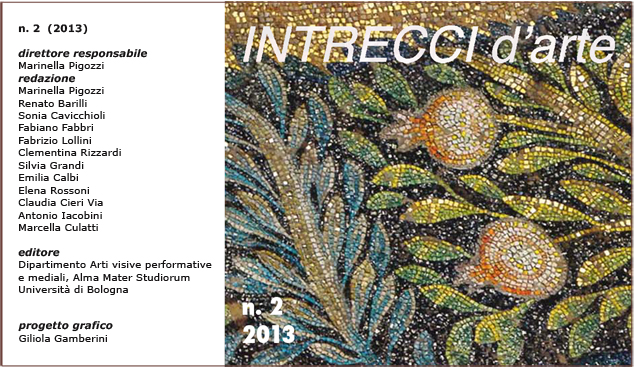Father Angelo Monesi’s «eroiche azioni» for the church of Carmine in Modena
DOI:
https://doi.org/10.6092/issn.2240-7251/3974Keywords:
Angelo Monesi, Modena, Chiesa del CarmineAbstract
The article proposes a biographical portrait of friar Angelo Monesi (1577-1656) and the circumstances of his prestigious committees for the church of Carmine in Modena, now church of San Biagio. I suggest that the Carmelite friar, that has been known so far as the supervisor of the church requalification, was instead the patron of the projects that, starting from the Thirties of the XVIIth century, had been turning the XIVth century original building into one of the highest examples of baroque art in Modena.
The study of the friar correspondence, so far unknown, reveals the constant interference of duke Francesco I d’Este in the works of embellishment that took place in those years. The role of the duke is confirmed by the fact that the quadraturisti involved in the pictorial decoration of the vault and the cupola of the Carmine vestry, are the same artists who had previously been working in Palazzo Ducale. The decorative cycle, which depicts episodes from the life of sant’Angelo of Sicily - the founder of the Carmelite order and the patron’s namesake - is just a first clue of the friar’s ambitious artistic goals.
The arredi, commissioned by father Monesi for the Carmine, represent an eloquent evidence of his aims: the monumental set of silverware, including six candel holders and one altar cross, crafted by the renowned manufacture Merlini, now at Musei del Duomo in Modena. The analysis of such precious products has shown their high value and the abundant profusion of the friar’s heraldry.
The same family emblems recur in the gemstone paliotto, now at the Galleria Estense in Modena, that was commissioned to the workshop of the grand duchy of Florence. This high masterpiece, nearly a unicum in the artistic reality of Modena, testifies the high financial resources of the friar, who could afford such high production costs thanks to the legacy of his mother.
This study clarifies the artistic choices of Monesi, who entrusted his memory to the value of the materials and the fame of the workshop involved in their working. The painted stucco family emblem - here finally deciphered - placed upon the vestry chapel entrance arc, is a confirmation of the friar artistic policy.Downloads
Published
How to Cite
Issue
Section
License
Copyright (c) 2013 Simone Sirocchi
The copyrights of all the texts on this journal belong to the respective authors without restrictions.
This journal is licensed under a Creative Commons Attribution 4.0 International License (full legal code).
See also our Open Access Policy.
Images and photographs may have different terms of license.
In making material available online the Journal acts in good faith. Parties who have questions or who wish to contest the use of specific works may contact the Editor in chief.
Metadata
All the metadata of the published material is released in the public domain and may be used by anyone free of charge. This includes references.
Metadata — including references — may be re-used in any medium without prior permission for both not-for-profit and for-profit purposes. We kindly ask users to provide a link to the original metadata record.






